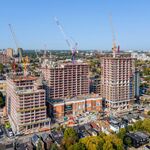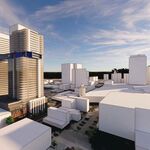I went to the open house for the design of the Keele station Thur night. The Keele station will have 3 entrances, and then down escalators and then the platform for the LRT. It appeared to be designed with glass to let lots of light in, The platforms did not seem wide enough. (Looked like they are not expecting to be carrying a lot of passengers for a long time if ever). I asked someone how wide the platforms would be and he said 3 metres but he did not seem sure. He appeared to be guessing because he did say something along the line of "probably" "should be". But i would think if they are doing a design rendering that it would be true to life. I did not like the way the open house was set up. It was not like a major presentation and then questions and answers. You were free to walk around and boards were set up and then people were there to answer questions. But it appeared to me they set it up as a divide and conquer. It would have been a lot better with a presentation that everyone hears, and questions and answers that everyone can hear.
I was also surprised when i asked about the actual building of the stations and was told they are going to tunnel the whole line and then go back and start building the stations. I was surprised because i thought as they finish the tunneling at one stop and are onto the next stop, the building of the first station would start and so forth. At least then it would be over and done with and the whole street would not be all tied up in a mess. To wait so many years before even seeing the actual station feels like the line will never finish.
I read your posts and realized you meant stops with above grade stations which Keele is not.





